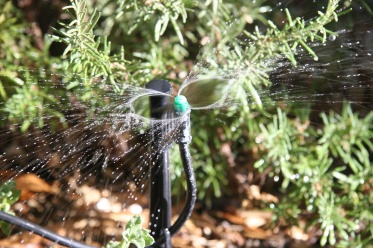Although I’ve never been accused of being short on words, there is often this blank in my mind about where to start the article. This month I will begin with a reminder that June is National Perennial Gardening Month. Perennials make perfect additions to gardens (as well as native plants) for pollinators, including bees, butterflies, and birds!
Here are 10 quick tips
to Fabulous Perennials:
1.
Begin
by preparing the soil.
2.
Choose
plants carefully, sun vs. shade, etc.
3.
Purchase
plants that can establish in one season.
4.
Space
perennials to give them room to grow.
5.
Fertilize
6.
Mulch
7.
Control
weeds
8.
Control
insects
9.
Additionally,
clean up the beds each season. Enjoy!!
Well, June is also the month of graduations, weddings,
vacations, Father’s Day, and the beginning of summer. This is the month that we
all begin to spend more of our free time out of doors, enjoying our gardens and
the fruits of our labor from the last 3 months. If all of you have kept up with
your tasks, then this month should be easy.
Here are garden tips
for June:
·
Watch
for the outbreak of bagworms on garden plants, especially junipers.
·
Deadhead
bulbs and spring perennials as blossoms fade.
·
Repeat
plantings of corn and beans to extend the harvest season.
·
Spray
roses with a fungicide to prevent black spot disease and fertilize monthly.
·
Continue
enjoying the antics of the wildlife in your yard and gardens by continuing to
supply food and water sources for them.
·
Change
hummingbird nectar at least weekly to prevent fungus from growing. You can make
your own nectar using 1 part sugar to 4 parts water---no food coloring please!
·
Move
houseplants outside for the summer. Place plants in areas with dappled shade
and some protection from hot summer winds.
·
Orioles
(if you were lucky enough to keep them around) begin building a gray woven
nest; this takes about a week.
·
Watch
for birds carrying food to their young.

Are you late getting planting started in your garden this
year? YOU ARE NOT ALONE! As busy as we were this May, and as wet as the weather
was, many people have commented that they haven’t even begun their planting.
That’s okay—you still have plenty of time. Plant selections should still be
pretty strong. Fully enjoy your garden; it is the only true place to connect
you to Mother Nature.
See you in the Garden…
Sandi Hillermann
McDonald






 Water conservation is of the utmost importance during our dry summer months. Water where it counts, at the roots, not the leaves. Drip irrigation systems in landscape beds do wonders for water conservation and are easy for the homeowner to install. Trees and shrubs would also benefit from a deep root watering this time of year. You can use a deep root feeder (without the fertilizer) for this purpose. Water plants around the drip line for best success. Doing this every 2-3 weeks is beneficial. When you mow your grass, cut it less frequently and at a higher level. Longer grass blades shade the soil and conserve moisture. Plant drought tolerant, native plants where possible.
Water conservation is of the utmost importance during our dry summer months. Water where it counts, at the roots, not the leaves. Drip irrigation systems in landscape beds do wonders for water conservation and are easy for the homeowner to install. Trees and shrubs would also benefit from a deep root watering this time of year. You can use a deep root feeder (without the fertilizer) for this purpose. Water plants around the drip line for best success. Doing this every 2-3 weeks is beneficial. When you mow your grass, cut it less frequently and at a higher level. Longer grass blades shade the soil and conserve moisture. Plant drought tolerant, native plants where possible.














